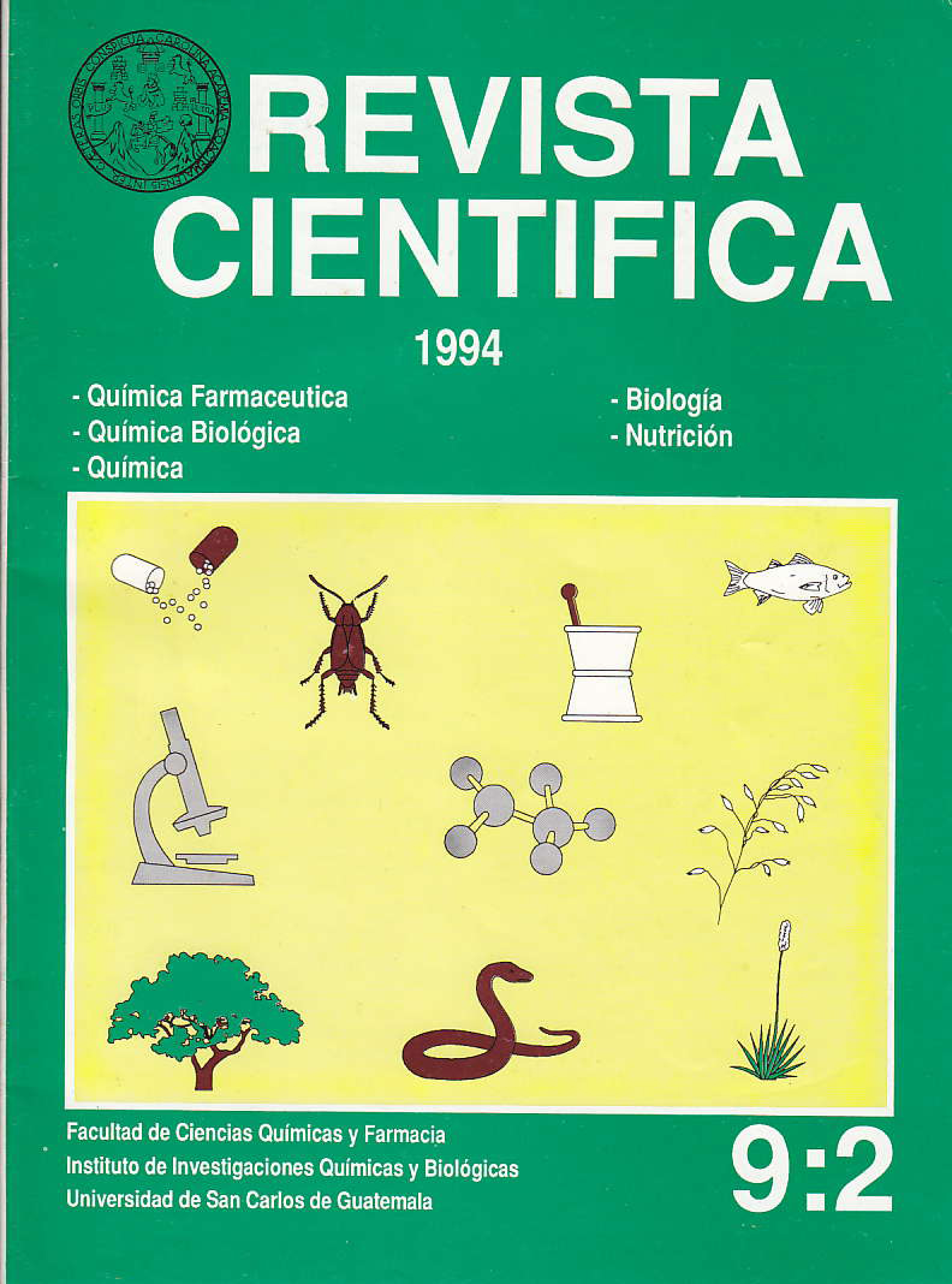Anti-inflammatory activity of medicinal plants popularly used in Guatemala
DOI:
https://doi.org/10.54495/Rev.Cientifica.v9i2.382Keywords:
anti-inflammatory activity, medicinal plants popularly used in Guatemala, medicinal plantsAbstract
The present study is carried out with the purpose of scientifically validating the anti-inflammatory activity popularly attributed to some plants in our country. Based on ethnobotanical surveys and literature reviews, 83 plants used for the treatment of conditions involving inflammatory processes were detected. The research on anti-inflammatory activity was chosen because the drugs used for the treatment of inflammatory processes are expensive. This work will be carried out in several phases. In the first stage, the background of each of the plants was investigated, the samples were collected, which were dried in solar dryers, the botanical species was determined and the anti-inflammatory test was carried out using a digital plethysmometer, white rats weighing 1.50-170 g, aqueous infusions of the plants, phenylbutazone as a reference drug and the inflammation produced with a 1% kaolin suspension (1). The results of the first phase indicate that elderberry bark and leaves at doses of 750 and 1,000 mg/kg, sanalotodo flower at doses of 750 mg/lg, and apacín root at doses of 750 mg/kg have anti-inflammatory activity. Infusions of pericón leaves and flowers, palo jiote bark, apacín leaves, achiote leaves, and manita flowers do not have anti-inflammatory activity at doses of 750 and 1,000 mg/kg according to the methodology used. The acute toxicity of the plants was determined and as a result, no toxic effects were observed in any plant at doses of up to 10 g/kg of weight. In the second phase, the results obtained showed that the etheric, ethanolic and aqueous extracts of the sanalotodo flower and morro leaves at doses of 10, 20, 40, 80, 160 and 320 mg/kg of weight did not present toxic effects on mice. Due to the high cost of medicines, it is important to continue with the validation of medicinal plants used by the Guatemalan population in the treatment of inflammatory processes.Downloads
References
Winter, C. A., et al (1962) Carrageenin-induced edema in hind paw of the rat as an assay for antiinflamatory drugs. Proc. Soc. Exp Bio. Med. 111:544-547. DOI: https://doi.org/10.3181/00379727-111-27849
Caceres, A.,et al. (1993). Actividad Antiinflamatoria de Plantas Medicinales de Uso Popular en Guatemala (1). Cuaderno de Investigación. USAC. DIGI 5-92.
Cifuentes, G. (1990). Evaluación de la Actividad Antiinflamatoria en vivo de T riqonella foenum-graecu L . (fenogreco) , distribuido pos los Centros Naturistas de la Ciuidad de Guatemala. Guatemala: USAC (Tesis de graduación Facultad de CC.QQ. y Farmacia) 31 p
Zabala, G. L. (1 989). Acción antiinflamatoria de las infusiones de raíz, tallo, hoja, flor y semilla de Moringa eleifera Lam (Paraíso blanco), evaluada en ratas. Guatemala: USAC (Tesis de graduación, Facultad de CC.QQ. y Farmacia) 77p
Downloads
Published
How to Cite
Issue
Section
License
Copyright (c) 1994 Amarilis Saravia Gómez, Armando Cáceres

This work is licensed under a Creative Commons Attribution 4.0 International License.
Authors who publish with this journal agree to the following terms:
- Authors retain copyright and grant the journal right of first publication with the work simultaneously licensed under a Creative Commons Attribution License 4.0 that allows others to share the work with an acknowledgement of the work's authorship and initial publication in this journal.
- Authors are able to enter into separate, additional contractual arrangements for the non-exclusive distribution of the journal's published version of the work (e.g., post it to an institutional repository or publish it in a book), with an acknowledgement of its initial publication in this journal.
- Authors are permitted and encouraged to post their work online (e.g., in institutional repositories or on their website) prior to and during the submission process, as it can lead to productive exchanges, as well as earlier and greater citation of published work.









